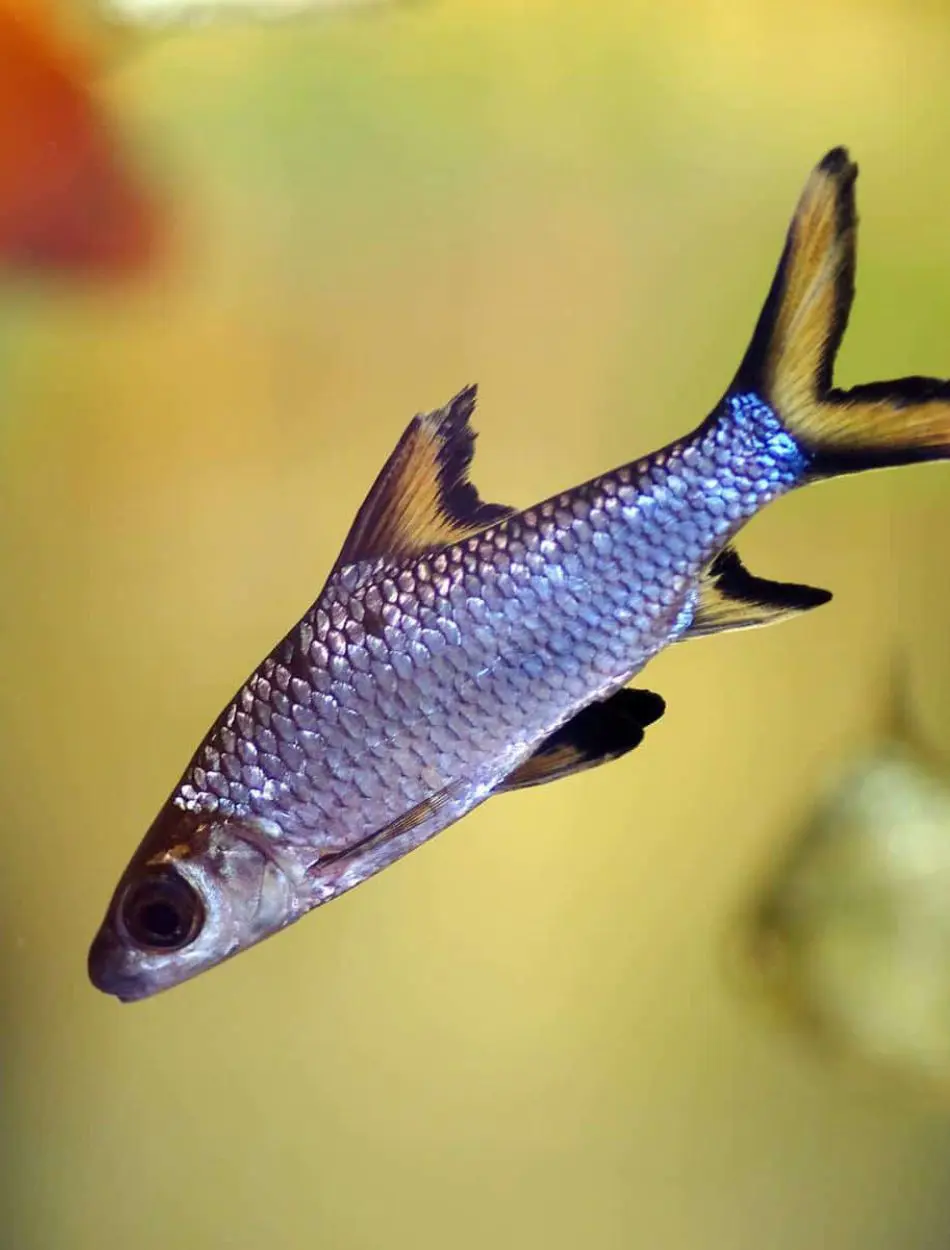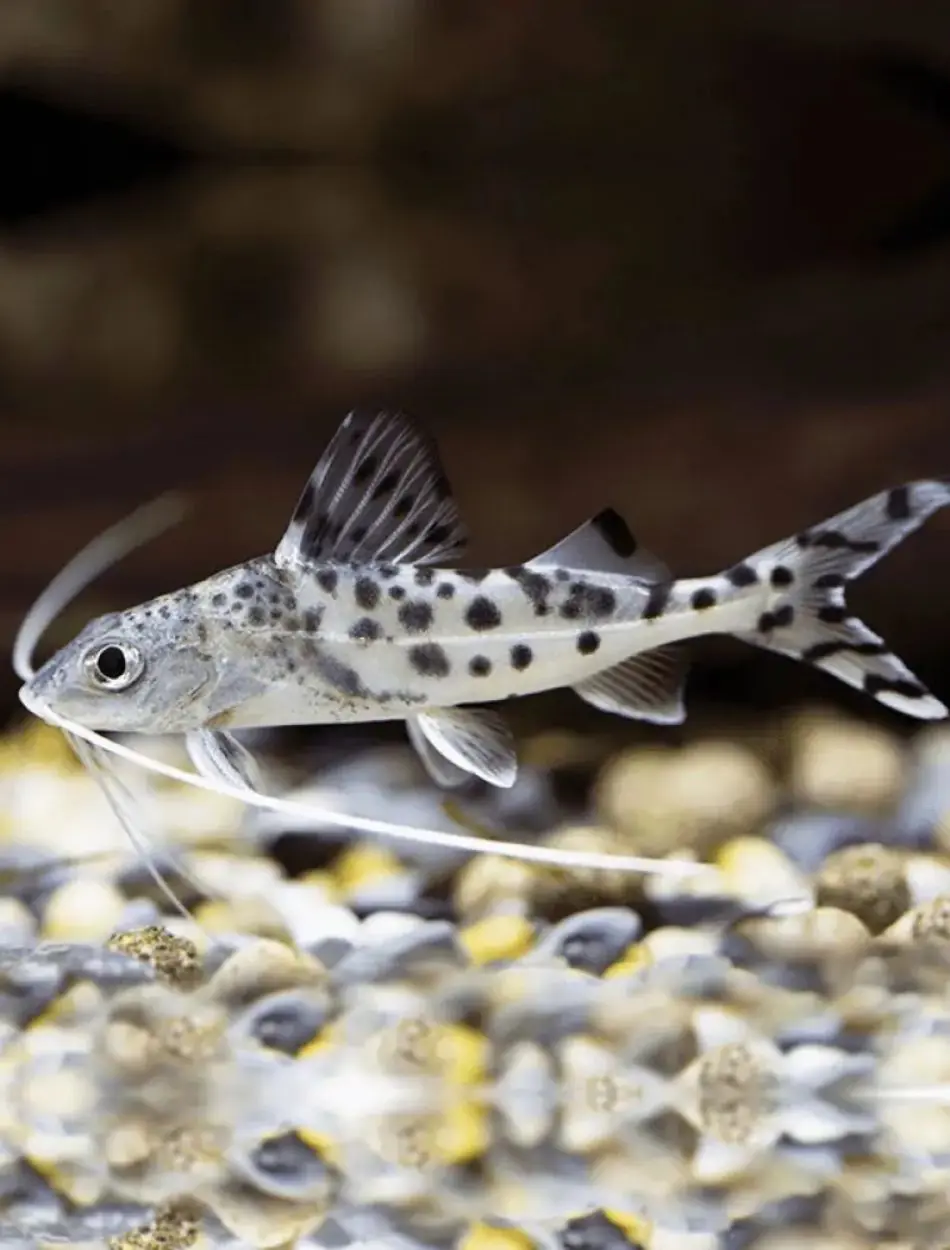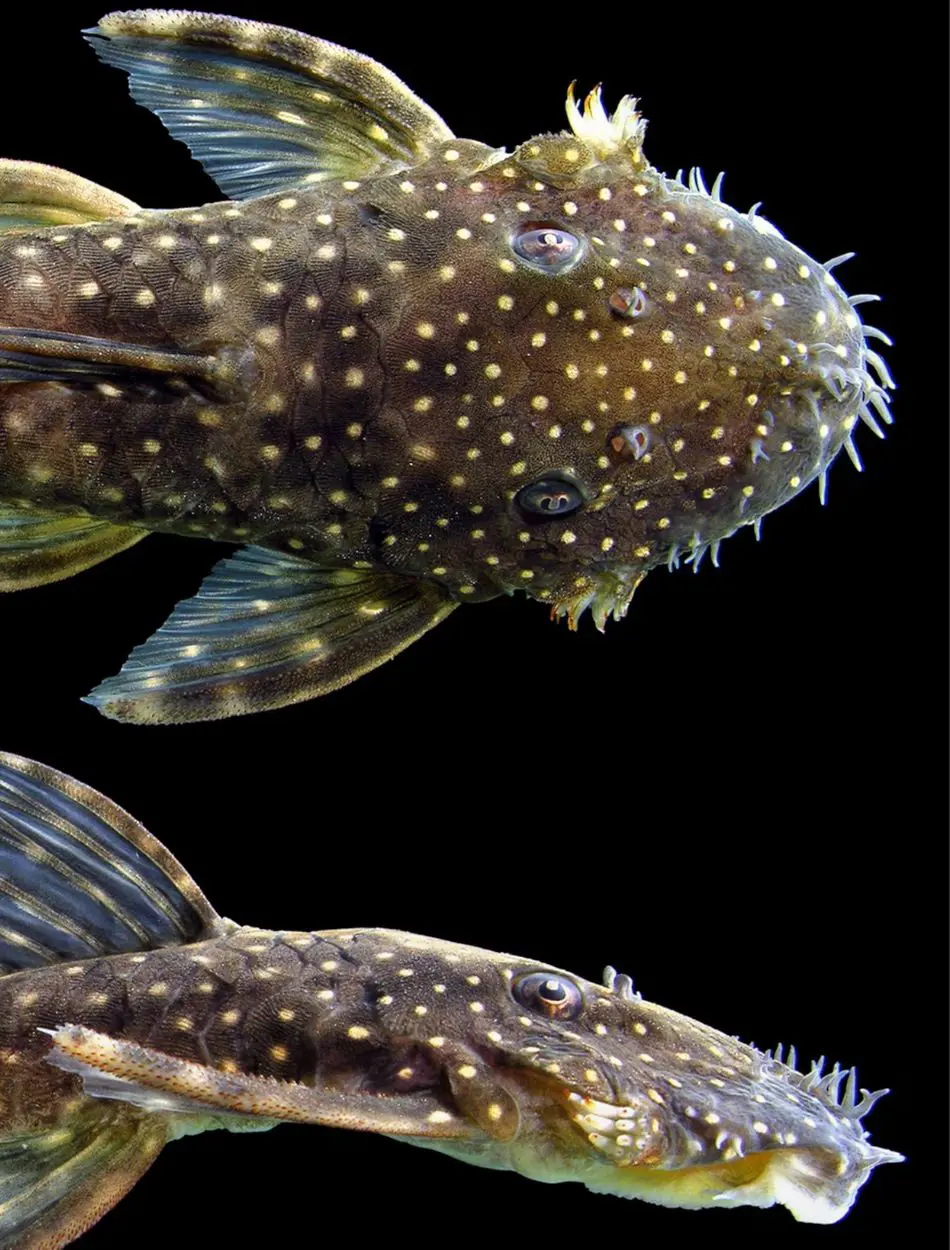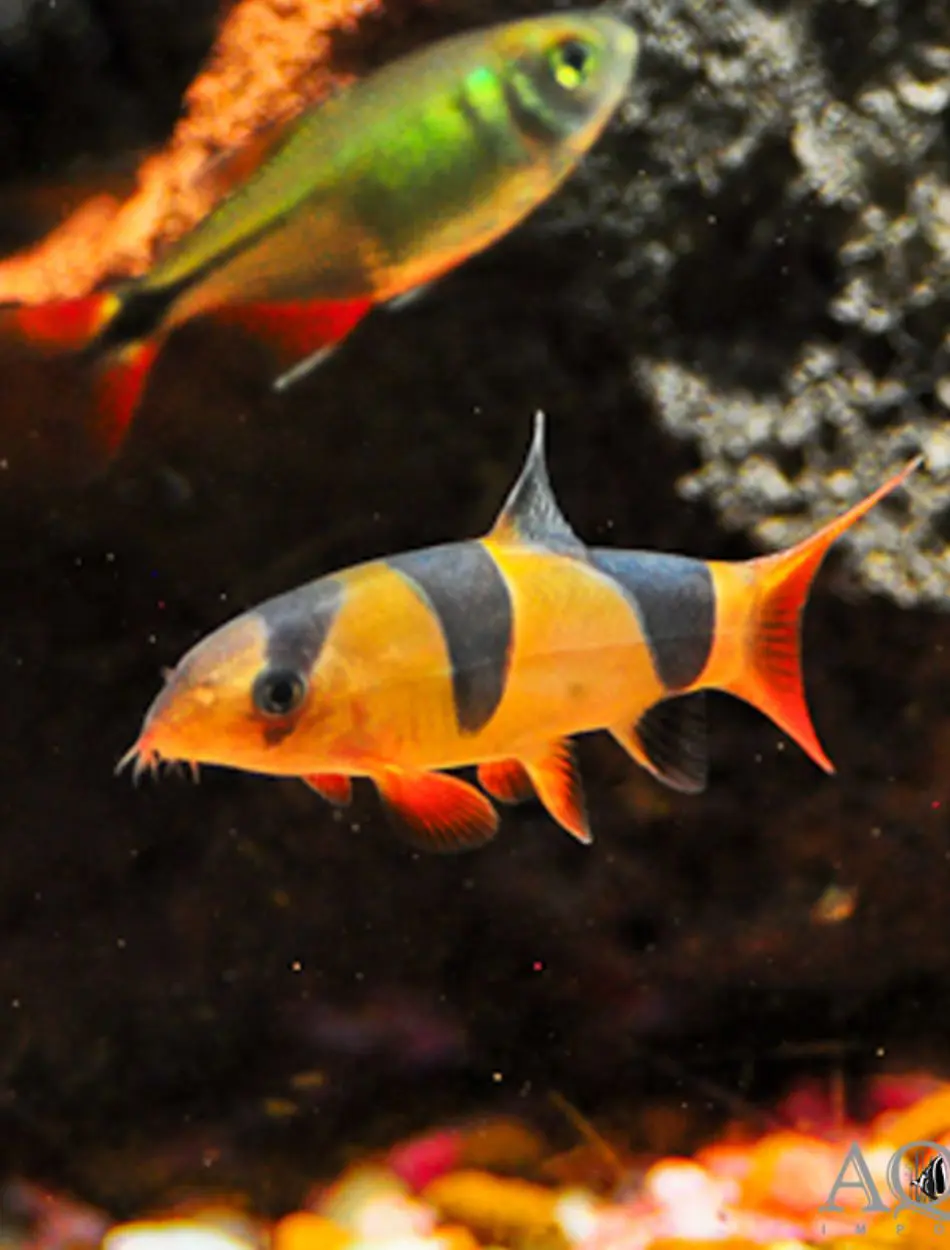Bala Shark Fish Species Profile And Tank Mates
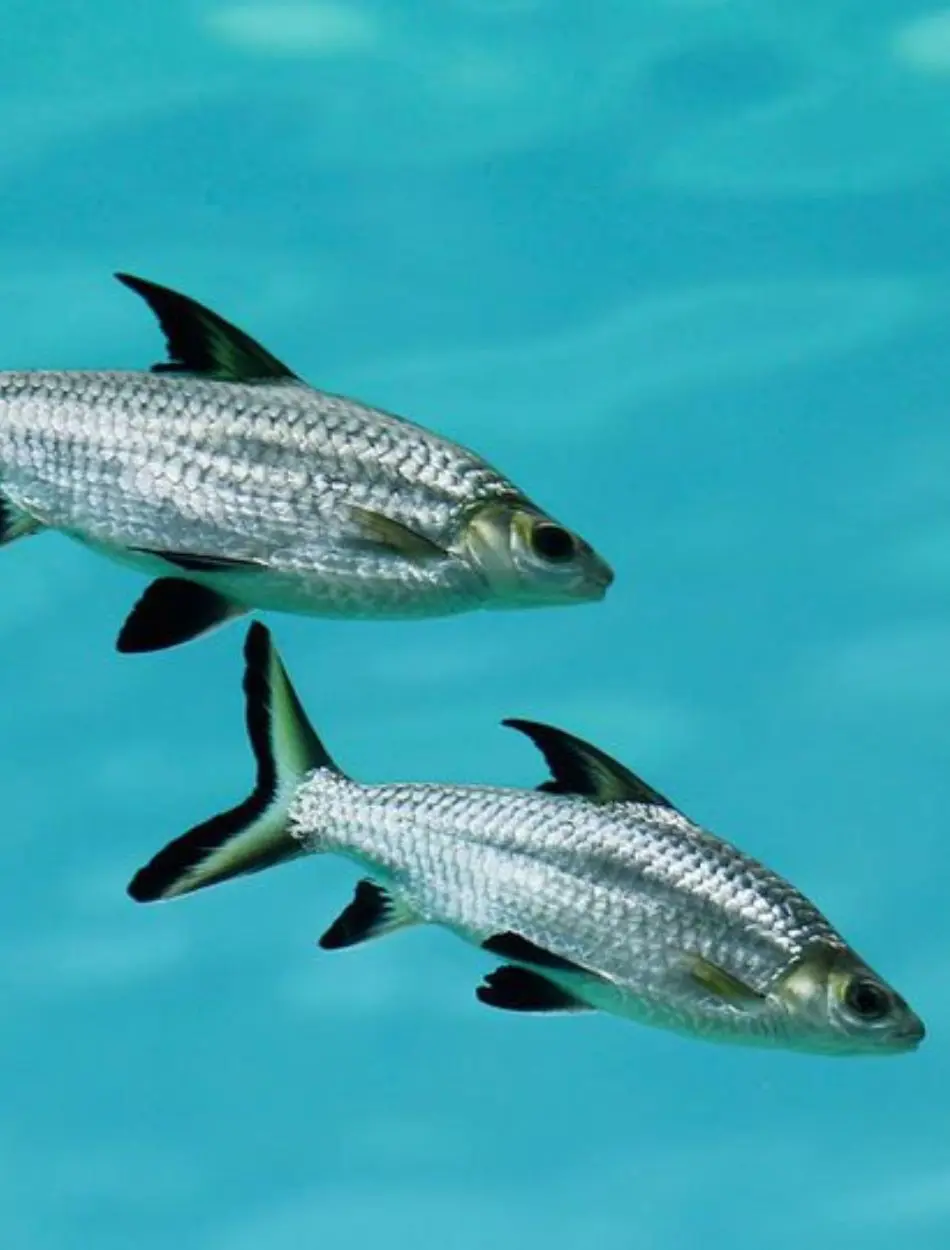
Bala Shark is one of the most beautiful freshwater aquarium fish that adds life to your aquarium. These fish are not true sharks, but their shark-like look and size are what make them interesting pets.
These fish showcase peaceful and calm behavior and are active, schooling fish, making them fit for a community aquarium and an attractive addition. If you are an aquarist with a keen eye on one of them, this article provides details such as natural behavior, ideal tank conditions, compatible tank mates, and many more that may help you decide whether to add them to your tank or not.
Overview
- Lifespan: 10 years
- Adult Size: 13 inches
- Scientific Names: Balantiocheilos melanopterus
- Common Names: Bala Shark, Hangus, Malaysian shark, Silver Bala, Silver Shark, Tricolor Shark, Tricolor Shark Minnow
- Temperament: Peaceful, but may eat small fish
- Minimum Tank Size: 120 gallon
Origin And History Of Bala Shark

Bala sharks are native to Southeast Asia in medium to large-sized rivers, as well as lakes. They used to be found in Thailand, Borneo, Sumatra, and the Malayan peninsula. However, these fish have become rare in many areas where they initially inhabited in.
The native land of these species is still under discussion, thus, there is an extreme depletion of them in their native lands. There are several beliefs regarding their reduction. Some say they were overfished by the aquarium industry, others blame the damming of the rivers, while many think pollution is the main cause.
Despite these beliefs, these sharks are rarely found in their original native habitat. However, recently these species have been commercially farm-bred in Asia by using hormones that promote spawning. Most of the specimens that are sold in the aquarium trade have been captive-bred.
Traits and Characteristics
Physical Characteristics
Bala shark is not a shark, but, they have a large triangular dorsal fin and a torpedo-shaped body that gives them a shark-like look. These fish are members of the Cyprinid family. These fish have a metallic silver body along with well-defined scales, large eyes, and a deeply pronged yellow-tinged tail.
The dorsal, caudal, pelvic, and anal fins of the fish are all edged in deep black. Thus, the tri-color scheme of silver, yellow, and black of this fish is the reason it is also known as the tri-color shark.
The most distinct feature of these fish is their size. While they can be seen 3 to 4 inches in pet shops, these tri-color sharks can grow up to 1 foot or more in size. Due to this reason, they are suitable for very large aquariums. Moreover, they are also schooling fish, meaning they should be kept with other fish of their kind.
Behavior and Temperament
These fish are active swimmers who enjoy swimming around the tank at high speed. They survive well in an abundance of open space due to their swimming habits. In addition, these fish are schooling fish and should be kept in groups of at least 3-5. They become stressed and how nervous behaviors such as hiding, jumping, or pacing when kept alone.
Silver sharks tend to jump when surprised or excited, thus, it is essential to secure the lid of the tank to prevent them from jumping out of the tank. This tri-color shark is a peaceful shark that does not show aggression and is not territorial.
They are skittish and may become scared by sudden movements, loud noises, or changes in their environment. This may lead to them being nervous and jumping out of the tank. They are more prone to this when kept in smaller groups or when kept alone.
Tri-color sharks are not aggressive but can be opportunistic feeders. They may try to eat very small fish that may fit in their mouth. Thus, it is important to consider this while selecting a tank mate.
Suitable Tank Mates
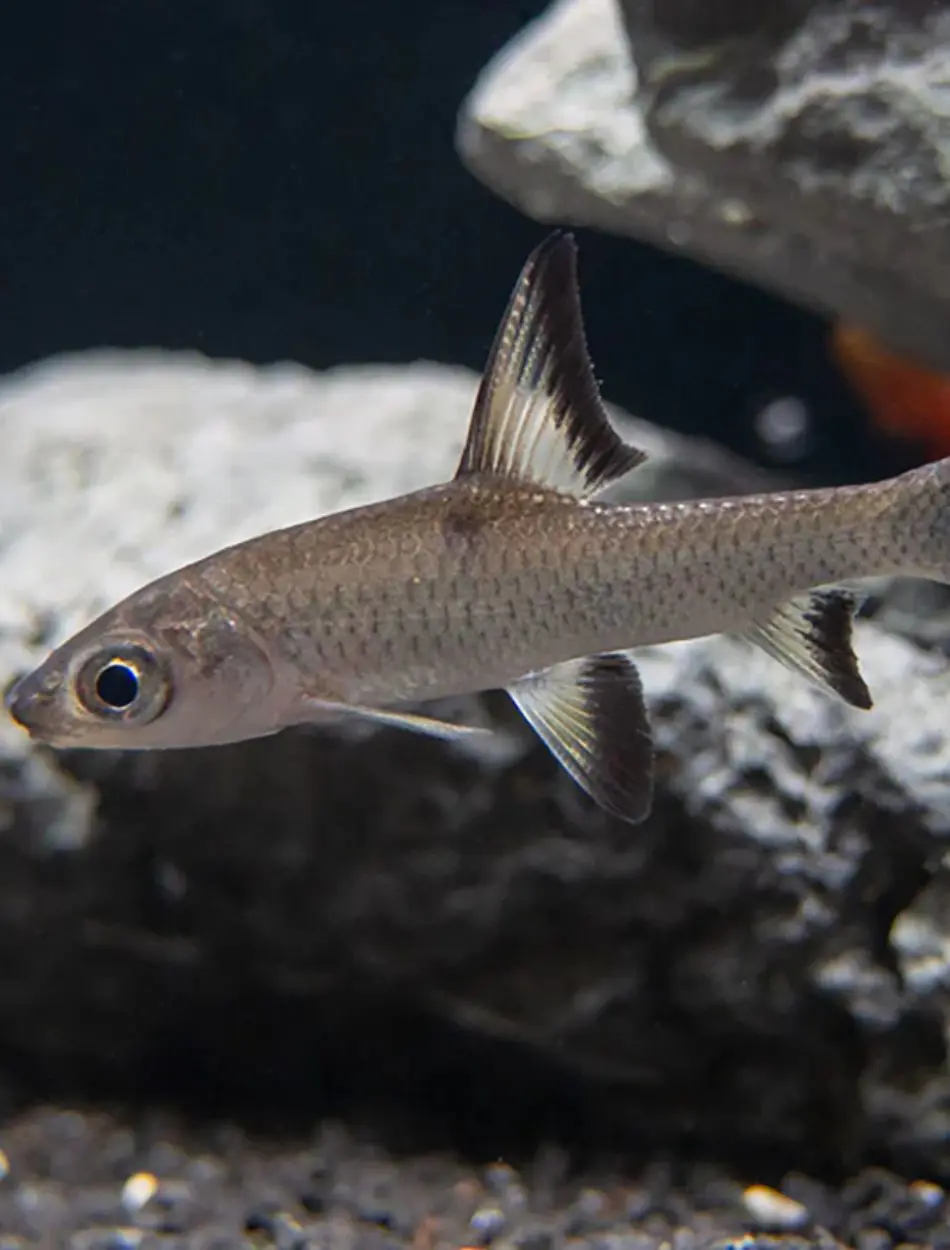
Due to their peaceful and calm temperament, these tri-color sharks can be kept with a variety of fish. They are schooling fish that thrive well in a group of four or more. If they are kept alone, they show apprehensive behavior.
Bala fish should not be kept with aggressive fish and very small fish as well. If the tank consists of only two or three balls, there is a chance a dominant fish may bully the others. However, if they are kept with very small fish, they may sometimes eat them, especially sleek fish.
Therefore, it is very important to understand and research before adding a Bala fish to your tank. Some of Bala's ideal tankmates are Blood Parrot Cichlid, Rasbora, Swordtail, Gourami, Tiger barb, Clown loach, and Rainbow fish. However, you should avoid keeping them with Neon Tetra, Rainbow Shark, Red-tail Shark, Invertebrates, Snails, and Shrimps.
Habitat and Care
- Tank Size: The most significant factor to consider while adopting a Bala is its tank size. As mentioned before, these fish can grow up to 1 foot or more, hence requiring an aquarium of 125 gallons to keep a group of them. These sharks are also active swimmers, so it is recommended to keep them in a long horizontal tank.
- Filtration: They produce large amounts of waste which makes it essential to install a powerful filtration system to maintain the water quality. You can use a canister filter or a sump system that is capable of handling the bio-load of large, active fish.
- Water Parameters: It is recommended to maintain the water temperature between 78-82 degrees Fahrenheit. These fish are tropical and need consistent temperatures. They can adapt to a range of pH levels, but they thrive at a well-stable level in the range of 6.5-8.0. Make sure to regularly test the water parameters and perform weekly water changes of 25-30% to keep the water clean.
- Tank Decoration: Since they are passionate swimmers, avoid overcrowding the tank with decorations. Leave room for them to swim, however, you can add smooth decorations such as rocks, driftwood, and plants to avoid damaging their fins. You can also include sandy or fine gravel substrates and caves or tall plants as hiding spots.
- Lighting: When it comes to lighting, these silver sharks prefer moderate lights. They tend to stress out in bright light, so use adjustable lights or add floating plants to diffuse the light. You can also mimic a natural day/night cycle of about 8-12 hours each day that he's to regulate their natural behaviors and reduce stress.
- Planting: These sharks tend to jump when startled or frightened, thus, the tank lid of the tank should be secured tightly. Moreover, while choosing plants, select hardy plants that can tolerate the activity of these sharks. You can use plants such as Java Fern, Anuvias, and Amazon Swords and attach them to rocks or driftwood.
- Feeding Area: Since these fish are fast eaters, it is a good idea to separate a dedicated feeding spot in the tank. This will make sure that the fish get their food without any chaos.
- Pond Areas: They can also be kept in ponds during warm climates, however, make sure that it is not warm year-round. These species are sensitive to water conditions such as low water temperature which may affect them with white spot disease.
Diet of Bala Shark
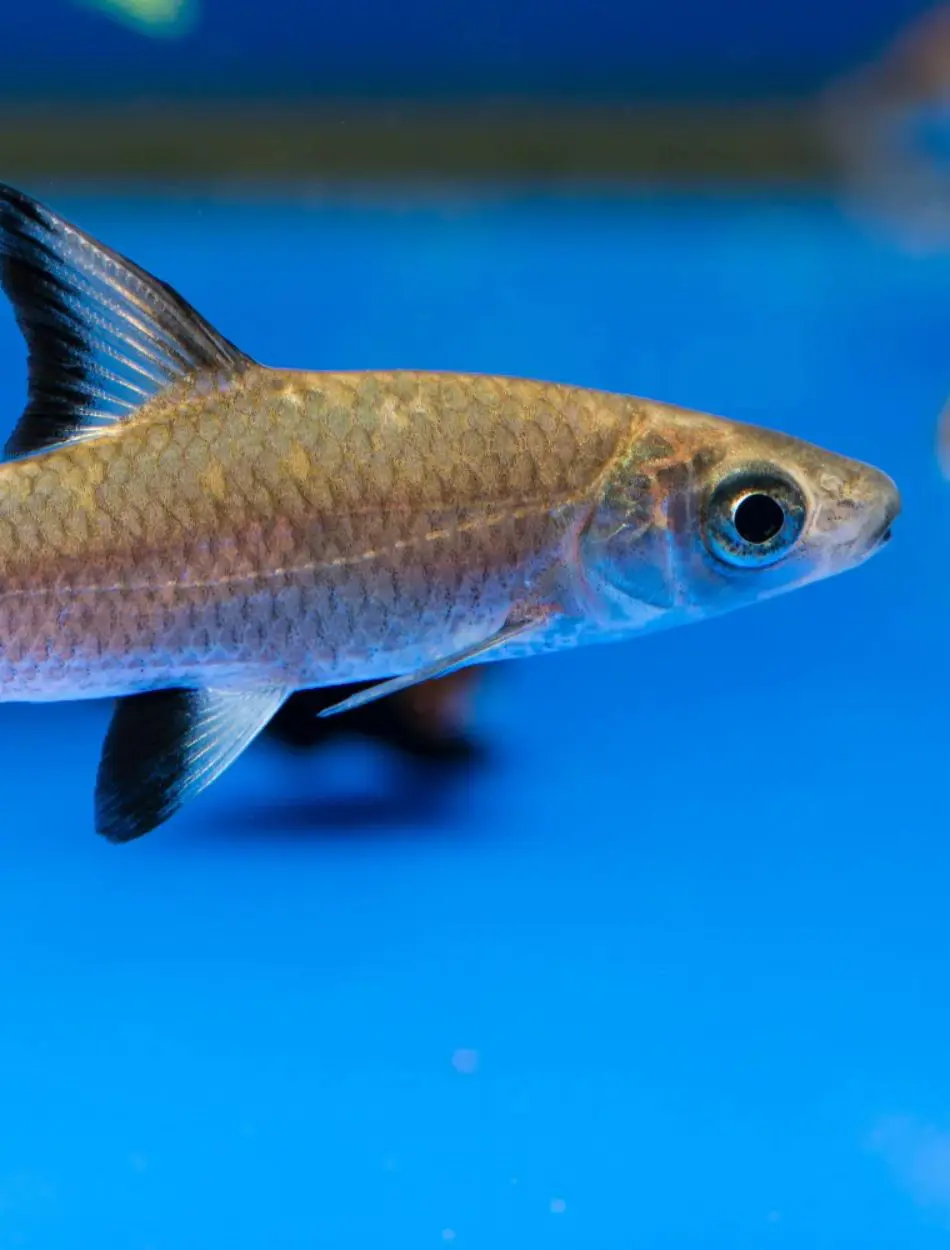
Bala Sharks are omnivorous creatures that have diverse diets. Whether in their natural habitat or captivity, it is very important to provide them with a balanced diet to maintain their health.
Natural Diet
In the wild, they eat a variety of food. They eat insects and larvae that fall into the water as well as aquatic insect larvae. These fish also consume small crustaceans such as shrimp and other invertebrates, plant materials such as algae, and other small fish that fit in their mouth
Diet in the Aquarium
It is important to replicate this varied diet when they are kept in captivity. They can survive on a combination of commercial foods, live or frozen foods, and plant-based foods.
When you feed a Bala, you can feed them flakes and pellets that are made for omnivorous fish. Also, make sure you choose foods that are sized for these fish, especially as they grow larger.
To replicate their natural diet, you can provide these sharks with live or frozen foods such as bloodworms, brine shrimp, daphnia, mysis shrimp, and tubifex worms. They can be fed with these foods 2-3 times per week. Bala Sharks' diet consists of vegetables as well. They eat foods such as spinach, zucchini, peas, and algae wafers that contribute to their digestion and overall health.
Feeding Frequency and Amount
These silver sharks are very active and need energy all the time, so you can feed them 2-3 times per day in small amounts. Regarding the amount, do not overfeed them, only give them as much food as they can eat in 2-3 minutes. Make sure to observe the eating behavior of your Bala Shark. They eat eagerly, so if they lose interest in food, it may indicate health issues.
Common Health Issues
Like many other fish species, Balas can also face various health issues if and when their environment or diet is not properly maintained. It is essential to understand these health problems and their signs to prevent or diagnose them early.
Ich
Ich, also known as white spot disease, is one of the most common diseases seen in aquarium fish. It is a condition in which white spots appear on the body, fins, and gills of the fish. Other signs of ich are rubbing against objects, heavy breathing, and lethargy. To treat this, you can raise the temperature of the tank and quarantine the affected fish if necessary.
Fin Rot
Fin Rot is a condition that is caused by bacterial infection due to poor water quality or physical damage. Some of the symptoms are ragged, frayed fins with white edges, sometimes with redness at the base of the fins.
You can treat this disease by improving the water quality, treating it with antibacterial medications, and removing any aggressive tank mates. To prevent this, you should maintain good water quality, avoid overcrowding, and reduce stress.
Swim Bladder Disorder
This disease can be caused by constipation, overfeeding, poor diet, or bacterial infection. The symptoms of it are difficulty in swimming, floating on the surface, sinking to the bottom, swimming sideways or upside down. To treat this, fast the fish for 24-28 hours, then feed the cooked, peeled peas to help clear the digestive tract. If the problem is still there, consult with the vet.
Nutritional Deficiencies
The cause of nutritional deficiency is a poor diet that lacks necessary nutrients. The symptoms of this disease are slowed growth, dull coloration, weakened immune system, and deformities in severe cases.
It can be treated by improving the diet by offering high-quality foods such as pellets, live or frozen foods, and vegetables. To prevent this disease from infecting the fish, make sure you feed a balanced diet that consists of proteins, fats, vitamins, and minerals.
Physical Injuries
Physical Injuries can be caused by various factors such as collisions with tank decorations, aggressive tank mates, or jumping out of the tank. Some of the symptoms include visible wounds, torn fins, missing scales, and infections at injury sites.
In case this happens, you can treat the fish by isolating them. You can also keep the water clean to prevent infection. To prevent this, provide a safe tank environment with several spaces and smooth-edged decorations.
Breeding
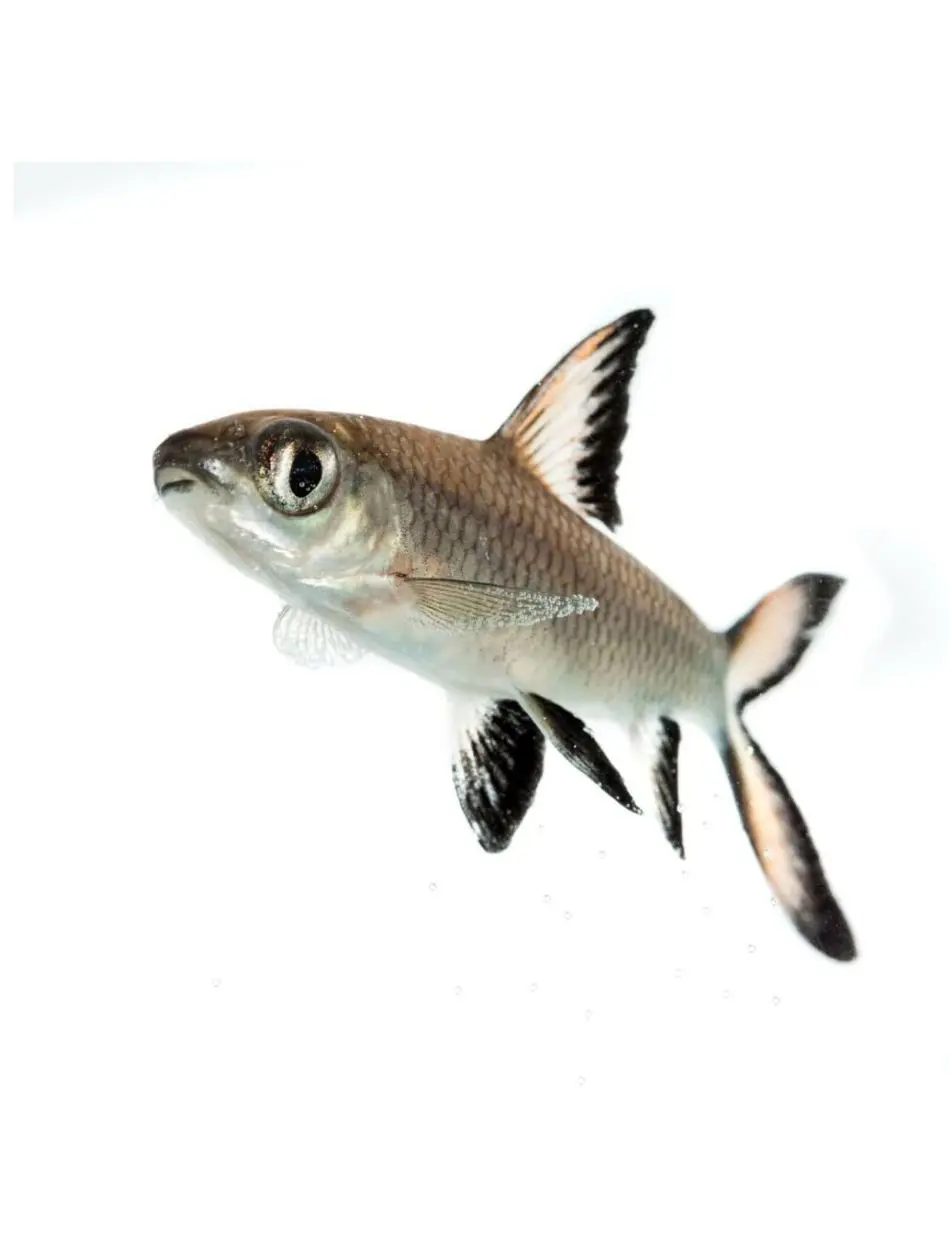
Breeding these tri-color sharks in captivity is very challenging and rarely successful outside of large breeding facilities. Some of the difficulties associated with the breeding of the species are as follows:
- Size Requirement: These sharks can grow up to about 1 foot and need an enormous amount of space to breed. In the wild, they breed in large rivers, however, in captivity, it is nearly impossible for them to breed. To breed them, one would require a tank of over 200 gallons.
- Natural Breeding Environment: While breeding in the dark, these fish require specific areas that include changes in water flow, temperature, and other environmental factors. While kept in an aquarium, these conditions are very hard to replicate.
- Sexual Dimorphism: There are no obvious physical differences between male and female Bala sharks. This makes it hard to pair them correctly for breeding.
- Breeding Behavior: These sharks are egg scatters, which means they release their eggs and sperm into the water column during spawning. After this, the eggs fall on the substrate of float in the water until and unless they hatch.
This breeding behavior of these sharks requires specific water flow conditions. It may also result in the eggs of this species being eaten by other fish or the parents themselves.
Top Lists

